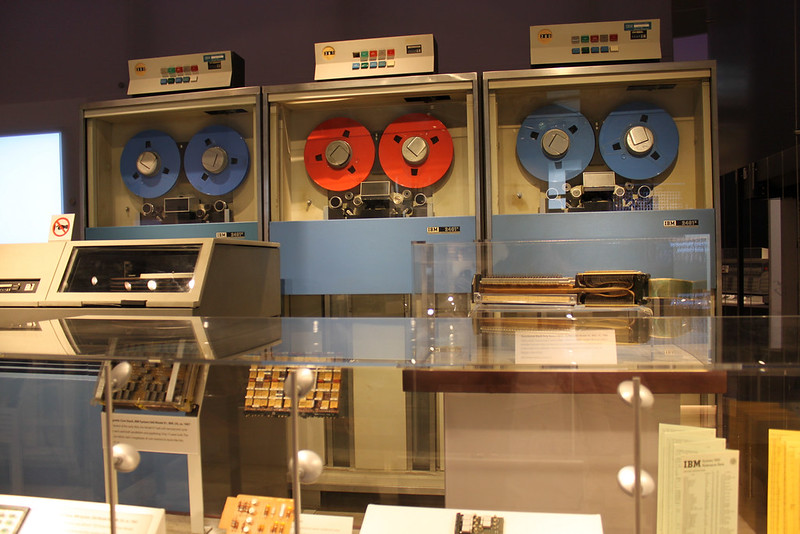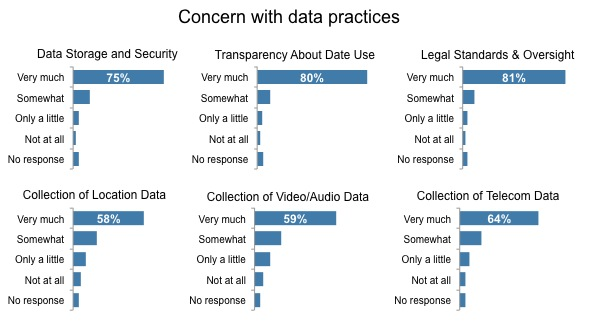Luxury assets
Super rich get to cash in on luxury assets | CityAM – interesting move putting luxury assets as a financial instrument basically. The luxury assets mirror similar secondary markets in street wear. Some luxury assets make sense like rare watches or fine art. It also probably says something about the values of stocks, bonds and currency? Hot money is chasing opportunities for investment that aren’t over-inflated, hence luxury assets
Business
Executives in China earning more than their companies | WantChinaTimes – part of a culture of making money today as you don’t know what tomorrow may bring
Time to bid farewell to Barbie, say China’s toymakers | WantChinaTimes – China needs to move up the food chain to be competitive, no longer lowest cost manufacturing base
To surf or not to surf? That is the question – interesting take on Yahoo!’s finances by our Nigel
Apple’s Profit Still Climbs, but Pressure is Growing – NYTimes.com – If Apple grew the next five years like it did the previous five years, it would be approaching the G.D.P. of Australia
Qualcomm Slips: FYQ2 Rev Misses; Raises Year EPS View | TechTraderDaily – not terribly surprising given that Chinese smartphone sales volumes were down
Government Clampdown Trips Up Sina | Young’s China Business – this has been astounding
Alibaba buying stake in Youku Tudou, a Chinese Web TV company, for $1.2 billion | NY Times – it is Jack Ma rather than Alibaba but you get the gist from the headline, not sure how good a deal it is for him now that the Chinese government is banning some of the most popular content on these streaming channels like Big Bang Theory
The smart businesses are investing in things that will make your clients obsolete | Advertising news | Campaign – digital isn’t just about data and business models but disruptive non-hierarchical networks of people. Hasn’t it always been?
Consumer behaviour
Global Automotive Demand: Spotlight on China | Nielsen
Taiwanese ‘chameleon’ workers vs Chinese ‘tigers’|WantChinaTimes.com – Taiwanese employees, generally speaking, can be characterized by make efforts to fit in and fulfill work commitments, while their Chinese counterparts think more about “winning,” and how best to earn money and be successful
What do you get if you cross a suitcase with rollerblades? » The Spectator – There are several reasons why video-conferencing has been so slow to take off. In the business world, it was mistakenly sold as ‘the poor man’s air travel’ when it should have been positioned as ‘the rich man’s phone call’. But in the home setting, I think there is another problem. Bluntly put, video-conferencing on a PC or mobile phone fails because we just don’t like many people enough to want their face within two feet of our own.
Economics
Requiem for the Middleman | Slate – interesting critique of the sharing economy
Amazon and the Squeezing of the Middle Class | Gawker – Amazon eating its own customer base?
Ethics
Are US universities are choosing rich Chinese students over Asian Americans? | Quartz – not so sure about the racism of US universities but wealthy Chinese families sending their kids is on a definite growth spurt
Is the DOJ Forcing Banks to Terminate the Accounts of Porn Stars? | VICE News – regardless of the moral aspects of the industry, what is interesting is the extra-judical nature of the way the accounts are closed down. What happens when they start using this as an economic weapon to protect strategic US business interests…
FMCG
UK Tea Tastes Turn Premium | EuroMonitor International – interesting to see, especially with Premier Foods having had poor financial results this week
Gadgets
Huawei sets sights on Samsung, aims to rule 4G era | WantChinaTimes – Shao Yang has big dreams. Huawei phones would need to improve software, hardware and online services in order for this to happen. At the moment from a technical and design point of view they don’t compare to the likes of Oppo, Xiaomi, Samsung or Apple. In addition, Huawei would need to do a 180 degree turnaround on brand marketing and advertising which is only likely to happen over Mr Ren’s dead body. Mr Ren is said to believe that the best advertisement for Huawei is its people which is fine when you aren’t marketing consumer goods
Nike CEO Confirms Move Away from Wearables – “I think we will be part of wearables going forward, it’ll be integrated into other products that we create.” – doesn’t really sound like a move away, but a change in tack, wearables become hygiene rather than a product category?
Innovation
Apple filing points to ‘next big thing’ | FT Tech blog – 2.8 billion dollars put aside for whatever new thing is going into the pipeline
Japan
Race against the clock: Shinkansen staff have just 7 minutes to get bullet train ready to ride | RocketNews24 – really interesting bit of process design
Journalism
Felix Salmon is leaving Reuters for the Fusion network because the future of media is “post text” – a loss for Reuters as Salmon has a great understanding and opinionated view of the sector. Not so sure about the ‘post text’ explanation, I presume they mean programmes on the wireless or them new fangled ‘talkies’ that they show at the cinema filmed in Hollywood
Luxury
Fake luxury goods market in China moves to WeChat | WantChinaTimes – no real surprise
Hermes holds first sale in China as frugality drive bites | WantChinaTimes
Why Burberry’s ‘Unusual’ Tmall Shop Is A Savvy China Move – because Alibaba owns e-commerce in China
Marketing
Is OnePlus a wholly owned subsidiary of Oppo? Chinese document suggests that the answer is yes – this is interesting, particularly as OPPO is as smart a brand marketer as you have in China
BlueFocus chief Oscar Zhao outlines global ambitions | PR Week – 30 per cent revenue from overseas or 900M USD annual billings by 2022
Media
Guangdong TV and radio broadcasters form conglomerate | WantChinaTimes – interesting media consolidation moves in China
China’s censors order 4 US shows to be taken off streaming sites
Mindshare launches The Loop | Marketing Interactive – this is interesting; real-time marketing a la the Oreo black out becomes a service sold around events on a Regus serviced office-type model
Facebook Beats In Q1 With $2.5B In Revenue, 59% Of Ad Revenue From Mobile, 1.28B Users (Josh Constine/TechCrunch) – how much of this revenue is from contextual marketing and how much is from app installs? If the focus is the latter it could be like the business of selling McMansions during the US property boom – wait for the bust…
WeChat To Launch Self-Serve Advertising System In Weeks — China Internet Watch – this is a really big deal
Online
Vladimir Putin Wants His Own Internet | Slate – interesting less because of the geopolitical theatre than it represents the kind of existential threat that the cloud faces as a business model and the balkanisation of the Internet due to security concerns from ECHELON to Snowden and beyond
Retailing
8 Things Most People Don’t Know About Amazon’s Bestsellers Rank (Sales Rank) | MakeUseOf – as important as SEO to sellers
$45 a Month for Unlimited Coffee | Slate – this needs to come to London and Hong Kong pronto
华为商城官网 -华为官方电子商务平台,提供华为手机(华为荣耀3C、畅玩版、3X、X1、P6等)、平板电脑、移动终端等产品。 – Huawei’s new direct e-tailing channel for China, also features opportunity for customer feedback. I guess trying to be Xiaomi with Huawei sensibilities
Security
The Internet Is Being Protected By Two Guys Named Steve | Buzzfeed – surprisingly readable Buzzfeed article on the developers behind OpenSSL
F.B.I. Informant Is Tied to Cyberattacks Abroad | NY Times – FBI sanctioned hacking overseas to gather intelligence?
Software
When Orange is not Just a Colour, and Other Challenging Queries | Brandwatch – great post on honing searches
Design News – Automotive Infotainment Still ‘Bugs’ Luxury Vehicles – it scares me that this is becoming more pervasive
Study: Samsung’s Apps Are Ubiquitous but Unloved – Digits – WSJ – the most damning number here has to be the percentage usage of ChatOn – given that OTT messaging platforms are currently the hot thing in mobile apps. Even in Korea KakaoTalk would be kiling it, maybe it would make sense for Samsung to buy some great Korean companies like Sentence Lab and Kakao Software
Space
Lunar Orbiter Photo Gallery – from the original NASA missions of 1965 and 1966
Technology
Micro-Robots Are Scary Awesome | Hack A Day – these could be more interesting than 3D printing for manufacturing
IBM unveils Power8 and OpenPower pincer attack on Intel’s x86 server monopoly – interesting that the focus isn’t necessarily computing power per watt of energy expended
I, Cringely Digital Me: Will the next Cringely be from Gmail? – I, Cringely – is Google using the mail provider for machine learning as well as advertising?
Telecoms
China Now Has Over 250,000 4G Base Stations | ChinaTechNews
The US just isn’t that important of a market for Huawei, after all | Quartz – but Europe is critical
Web of no web
Russia’s Hoping to Make Its GLONASS Positioning System a Competitor to GPS | Motherboard – this could be interesting if one cross-referenced Galileo, GLONASS and GPS
Wolverton: Smartwatches show promise, but need work – SiliconValley.com – it is very early days with wearables yet
Digital Mapping May Be Nokia’s Hidden Jewel – NYTimes.com – Microsoft wanted to buy Here and failed why would Nokia sell? More likely the company gets bought and broken up for resale. More related content here.
Wireless
How do Chinese Phones cost so little? The reasons why availbility is an issue, demand is high and prices are low – Gizchina.com | Gizchina.com
It’s mostly Android deserters who buy cheap iPhones | BGR – interesting that Apple is getting Android transfer rather than feature phone users

